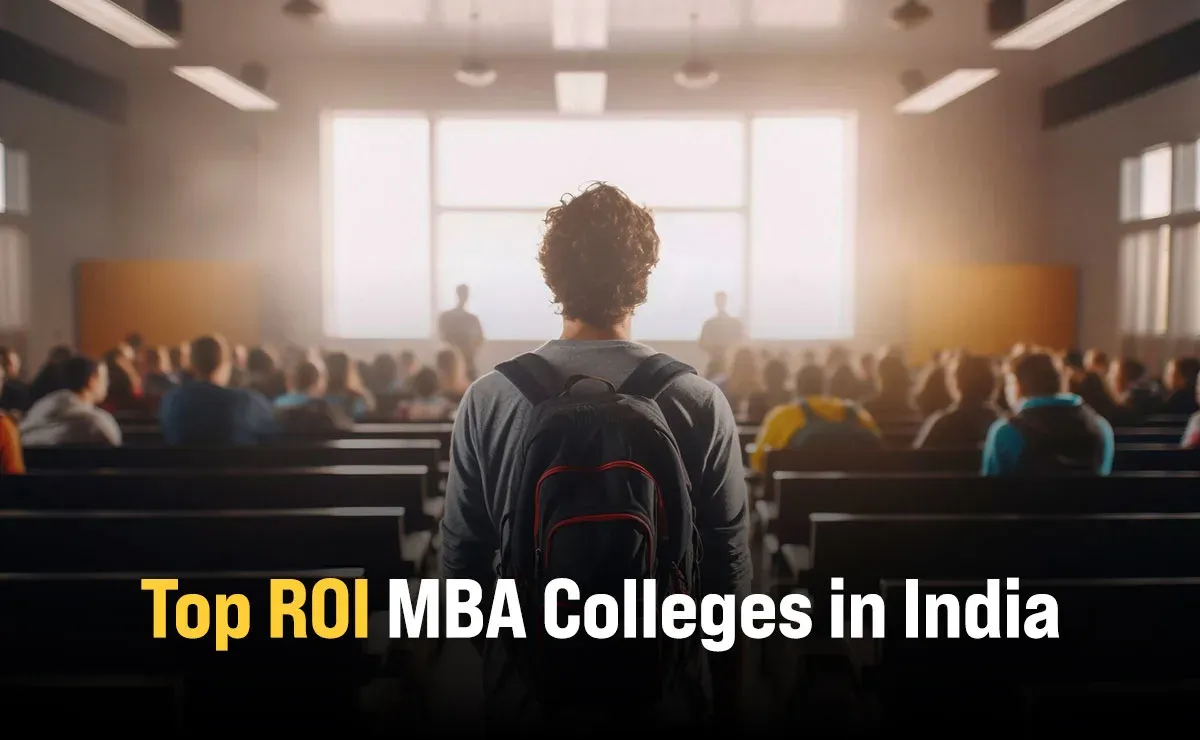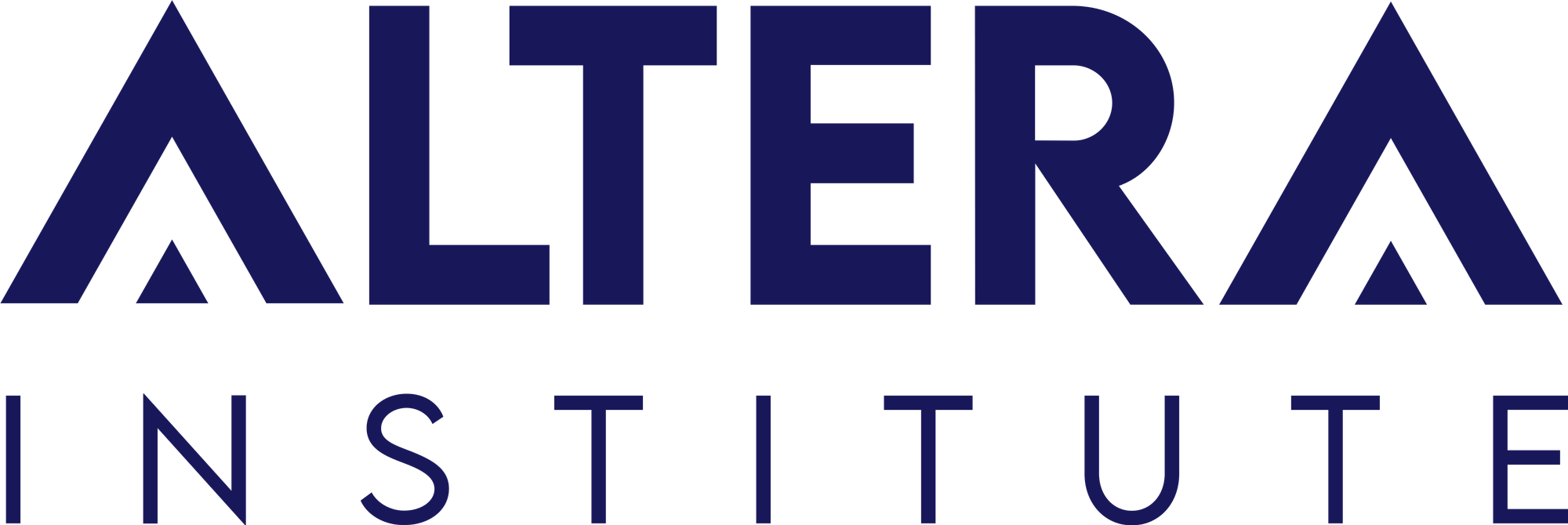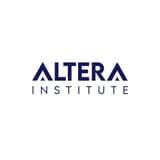Best ROI MBA Colleges in India

An MBA has long been a sought-after postgraduate program by students from all backgrounds. It is a program that should be chosen based on individual needs, a requirement above all else. But what truly helps make a strategic decision in this scenario is to evaluate the return on investment (ROI) for an MBA program.
ROI evaluates the balance between the cost of education (including tuition and living expenses) and the average salary offered during placements. The choice of your college, as well as specialization, fee structure, and average CTC post-graduation, all determine the ROI of an MBA. Typically, the cost of pursuing an MBA in India is very high, unless you are passing out from a government institute.
For the best ROI in MBA in India, top colleges include FMS Delhi, JBIMS Mumbai, and certain IIMs (like Ahmedabad, Bangalore, Calcutta, and Lucknow), along with TISS Mumbai and the IITs (DMS IIT Delhi, SJMSOM IIT Bombay). These institutions offer high average placements relative to their comparatively lower fees.
For students with limited financial resources or those keen on securing the best value for their investment, this article explores the best ROI MBA colleges in India to help them make an informed decision.
Top ROI MBA Colleges in India
Here's how you can calculate ROI for an MBA program:
Formula: ROI (%) = (Average Salary ÷ Total Fees) ×100
Below mentioned is a list of the top 10 best ROI MBA colleges in India.

College | Total Fees (INR) | Average Package (INR) | ROI (%) |
FMS Delhi | 2.32 L | 34.1 LPA | 1469.8% |
IIT Bombay | 14.61 L | 29.35 LPA | 200.80% |
Great Lakes Institute of Management, Chennai | 14.7 L | 15.1 LPA | 102.72% |
Department of Management Studies, IIT Delhi | 12 L | 25.82 LPA | 215.17% |
IIM Mumbai | 21 L | 25.27 LPA | 120.24% |
Symbiosis Institute of Business Management (SIBM) | 24.2 L | 28.16 LPA | 116.36% |
IIM Bangalore | 26 L | 35.31 LPA | 135.81%, |
XLRI, Jamshedpur | 28.6 L | 28.02 LPA | 97.97% |
IIM Calcutta | 31 L | 35.07 LPA | 113.13% |
IIM Ahmedabad | 34.15 L | 34.45 LPA | 100.88% |
Ranking Parameters for Top MBA Colleges
The National Institutional Ranking Framework (NIRF) for evaluating B-schools is the most widely accepted report, which has been published every year since 2016. Top MBA colleges are assessed through diverse criteria, incorporating both measurable data and qualitative insights.
The objective is to present an accurate, student-focused evaluation of business schools that align with varying career aspirations. Consequently, here are the parameters used to classify the top MBA colleges in India.
Teaching, Learning, and Resources (TLR)
This includes the assessment of factors like the academic infrastructure, faculty quality, and resource utilization, all of which contribute to a robust learning environment.
- Student Strength (SS): Measures the institution’s ability to attract and retain students, including doctoral students, reflecting its popularity and academic standing.
- Faculty-Student Ratio (FSR): Evaluates the ratio of students to faculty members, emphasizing the availability of permanent and experienced faculty for individual student attention.
- Faculty Qualifications and Experience (FQE): Considers the percentage of faculty with PhDs or equivalent qualifications, as well as their academic and industry experience, ensuring students receive top-notch instruction.
- Financial Resources Utilization (FRU): Analyzes the efficiency and transparency in the allocation and utilization of financial resources for academic and infrastructural development.
Research and Professional Practice (RP)
Research output and professional engagement uplift the quality of an institute as they contribute to nurturing industry practices among students.
- Publications (PU): The volume of research published by an institution reflects its ability to contribute to academic and professional fields.
- Quality of Publications (QP): Not just volume but the quality of research also matters. Its impact is measured through citations and publication quality metrics.
- Intellectual Property and Patents (IPR): It accounts for patents published, granted, and licensed by the institute, showcasing its innovation capabilities and industry relevance.
- Footprint of Professional Practice (FPPP): Measures the success of consultancy projects, executive development programs, and other professional engagements.
Graduation Outcomes (GO)
Graduation outcomes reflect the success of students in completing the program and securing promising career opportunities after.
- University Examinations (GUE): Examines the academic performance of students, including pass percentages and consistency in results.
- CTC Metrics: Metrics such as average, median, and highest salary packages are analyzed to understand how well a college prepares its students for the job market.
- Recruitment and roles: The diversity of recruiters and the nature of roles offered to students also provide insights into the quality of the institute.
Outreach and Inclusivity (OI)
This parameter is perhaps one of the most significant factors, which evaluates the institution’s commitment to diversity, inclusion, and accessibility.
- Regional Diversity (RD): Reflects the percentage of students from different states and countries, highlighting the institution’s appeal and inclusivity.
- Women Diversity (WD): Measures the percentage of women students and faculty, ensuring gender representation and inclusivity.
- Economically and Socially Challenged Students (ESCS): Considers the support provided to students from economically weaker and marginalized backgrounds.
- Facilities for Physically Challenged Students (PCS): Ensures the campus is accessible and supportive of students with physical disabilities.
Perception:
The reputation of an MBA college is built over time through consistent performance, alumni success, and industry goodwill. Older institutions like the IIMs have a significant advantage due to their established legacy, which fosters trust among recruiters and stakeholders.
- Peer Perception (PR): Derived from surveys conducted among academic leaders, industry experts, employers, and other stakeholders to assess the institution’s standing in the academic and professional communities.
Brand value is not just limited to industry recognition; it also includes academic reputation, research output, and collaborations with international universities. Institutions with a strong brand often offer students an edge in the global job market.
Alumni Success and Network:
A strong alumni network is a hallmark of a great business school. Graduates who hold influential positions in top organizations enhance the institution's brand and create networking opportunities for current students. The career trajectories of alumni are considered to evaluate the long-term value of an MBA program.
Key Insights into Changing Parameters
Although the core parameters remain the same across all disciplines, sub-parameters may vary for management institutions, especially in the modern era. Today some of the top jobs that provide exponential opportunities for professional growth are innately digital in nature.
Think of roles like eCommerce managers, category managers, digital brand managers, and influencer marketing experts. Demand for these roles is increasing yet securing them remains highly competitive. They require specialized skills to handle modern-day business challenges, which are best learned through practical application.
Hence, top universities are trying to better align themselves with the changing industry requirements and innovations. For example:
- MBA colleges emphasize professional engagement metrics such as executive development programs and industry projects. They are conducted by industry professionals acting as mentors, providing real-world insights and increasing industry alignment.
Institutions excelling in these parameters are better equipped to offer world-class management education, producing leaders equipped to drive industry growth and innovation.
This is where institutes like the Alter Institute and it's post-graduate program (PGP) in applied marketing are able to find a space for themselves. This 15-month program reimagines professional marketing education while providing a forward-thinking solution for aspiring professionals seeking to break into high-growth, digital-first roles.
Key Factors Determining the Best ROI MBA Colleges
ROI measures how effectively an MBA program translates its costs—tuition, accommodation, and other associated expenses—into tangible career benefits, such as salary growth and career advancement.
Determining the best ROI MBA colleges involves a detailed evaluation of several critical parameters, which collectively define the true value of the program.

Total Cost of the Program
The foundation of ROI calculation is the total cost of the program, which includes tuition fees, living expenses, and other associated costs. MBA programs that have lower fees but provide higher average CTC during placements are well regarded as the best ROI for an MBA college in the country.
Investing in an MBA involves two primary expenses: tuition and cost of living. Some colleges, like the Faculty of Management Studies (FMS), are known for their affordable fees without compromising on academic rigor or placement opportunities. However, living expenses and other personal expenses are still significant components of the total cost.
Average post-MBA Salary
The ROI of an MBA program is directly linked to the average post-MBA salary of an individual. This is because it represents the immediate financial benefit gained after graduation.
Top institutes like IIM Ahmedabad, ISB Hyderabad, and XLRI Jamshedpur consistently report high average salaries, making them top choices for students. However, they also incur a significant course fee that requires further consideration.
But naturally, higher post-MBA salaries shorten the payback period and enhance the financial viability of pursuing an MBA.
Payback Period
The payback period measures how quickly graduates are able to recover their total MBA investment through their increased post-MBA earnings. A program with a shorter payback duration signifies a better return on investment.
For instance, an MBA costing ₹25 lakhs with an average annual salary of ₹15 lakhs has a payback period of just 1.7 years, which is a desirable outcome for most students. Colleges with shorter payback periods attract aspirants seeking faster financial stability.
Long-Term Career Prospects
ROI is not just about the first job post-MBA but also about long-term career growth and earnings. Factors such as job stability, promotions, and salary hikes over a decade significantly influence ROI.
A 10-year ROI calculation provides deeper insight into this whole scenario by projecting cumulative earnings over a decade against the total cost of the program. Institutions with strong alumni networks, industry partnerships, and a reputation for producing future leaders often offer excellent long-term ROI.
Why is it Necessary to Look at High ROI MBA Colleges?
Return on investment (ROI) becomes an essential factor for aspirants to evaluate MBA programs because it ensures that the resources you are dedicating will eventually be outweighed by the tangible benefits post-MBA.
The following points highlight why choosing MBA colleges with high ROI should be a priority:
Faster Loan Repayment and Reduced Financial Stress
As education costs surge, a significant number of students depend on loans to fund their MBA. High ROI colleges typically offer better placement opportunities and higher starting salaries, enabling graduates to repay their loans quickly. This significantly reduces the financial burden and stress associated with prolonged debt, allowing graduates to achieve financial independence sooner.
Enhanced Earning Potential and Financial Security
Graduates from high ROI MBA colleges tend to earn competitive salaries and enjoy faster career progression. This increased earning potential fosters long-term financial stability, enabling better financial planning, savings, and investments. Over time, this stability contributes to a secure and prosperous future.
Long-Term Career Growth
The advantages of attending a high ROI MBA college extend beyond the immediate post-graduation period. Graduates are often equipped with better skills, a strong professional network, and a prestigious degree that holds value throughout their careers. This foundation ensures sustainable growth and access to leadership roles over the years.
FAQs
Q1: What is the best ROI MBA college in Delhi?
Ans: The Faculty of Management Studies (FMS) is undoubtedly one of the best MBA colleges in Delhi. With a total course fee of only 2.32 lakh and an average package of INR 34.1 LPA, the ROI of this course is 1469.8%. The formula used to reach this conclusion is:
ROI (%) = (Average Salary ÷ total fees) ×100
Q3. Which IIM has the highest ROI?
Ans: IIM programs in general incur a significant amount of fees but at the same time offer some of the highest average CTC in the country. Colleges like IIM Mumbai and Bangalore, however, have comparatively lower fees along with great CTCs to match, which students can definitely consider.
Summing Up:
Selecting the right MBA institution is a pivotal decision for students aiming to excel in management careers. Evaluating colleges based on ROI ensures that the financial investment in education leads to substantial and tangible career benefits.
High ROI MBA programs not only offer impressive salary packages but also provide long-term career stability, faster loan repayment, and access to high growth professional opportunities. However, selecting the best program should align with an individual's career goals, financial capacity, and desired industry.
By focusing on ROI as a guiding principle, students can make informed decisions that secure their financial future while empowering them to thrive in their professional journeys.





